Improving your vehicle’s fuel efficiency is simpler than you might think. Start by keeping your tires properly inflated; this minimizes rolling resistance thereby lessening fuel consumption. Lighten your car’s load, unnecessary weight in your trunk forces your car to work harder, burning more fuel. Utilize your AC, surprisingly, at high speeds it’s more fuel-efficient than rolling down the windows. Maintain a steady speed, ideally 50-60 mph; driving too fast or too slow decreases fuel efficiency considerably. Finally, accelerate smoothly; jerky movements result in unnecessary fuel burn. To gain a deeper understanding of these tips and more, explore further.

Key Takeaways
- Maintain proper tire inflation to reduce rolling resistance and improve fuel efficiency.
- Lighten your vehicle by decluttering the trunk to require less energy to move.
- Utilize the AC at high speeds instead of open windows for better fuel economy.
- Aim to drive at the ideal fuel efficiency speed, typically around 50-60 mph.
- Practice steady acceleration to minimize engine workload and reduce fuel consumption.
Keep tires pumped up
While you mightn’t realize it, keeping your tires properly inflated can greatly improve your vehicle’s fuel efficiency. This simple maintenance task is one of the easiest ways on how to improve fuel efficiency without any significant costs or technical skills involved.
Under-inflated tires are a common cause of decreased fuel efficiency. They create more resistance, which requires your engine to work harder and burn more fuel. By keeping your tires properly inflated, you reduce rolling resistance and your engine can operate more efficiently.
Check your vehicle’s manual to find the correct tire pressure for your specific model. It’s essential to use a good quality tire pressure gauge, as inaccurate readings can lead to improper inflation.
Check the pressure when the tires are cold, as heat from driving can increase pressure and give a false reading.
Don’t forget to inspect your tires for any damage, too. Even a small puncture can lead to gradual deflation, negating the benefits of proper tire inflation.
Lose the weight in your boot
Shedding some weight from your car’s trunk can considerably boost your vehicle’s fuel efficiency.
It’s a simple concept: the lighter the vehicle, the less energy it requires to move, consequently, consuming less fuel. Think about it as carrying a heavy backpack. The more you pack, the harder it’s to walk, and the quicker you tire out.
Unnecessary items in your boot could be adding significant weight, causing your car to burn more gas than it needs to.
So, how can you improve fuel efficiency in this aspect? Start by decluttering your car’s trunk. Remove items you don’t use regularly. Tools for emergencies are essential, but that set of golf clubs from last season probably isn’t.
Next, think about the weight of your vehicle itself. If you’re considering a new car, lighter models will generally be more fuel-efficient.
But remember, safety shouldn’t be compromised for the sake of saving gas.
In essence, managing the weight in your trunk is a cost-effective, immediate action you can take to save gas.
Drive with AC
Another practical measure you can take to improve your vehicle’s fuel efficiency is judicious use of air conditioning.
It’s a common misconception that running the AC is always a gas guzzler. While it’s true that the AC can increase fuel consumption, it’s not always the case. As a driver, understanding when and how to use your AC can greatly impact your vehicle’s fuel efficiency and how to save gas while driving.
Here are three technical tips to remember:
- Use AC at High Speeds: When you’re driving at high speeds, it’s more fuel-efficient to use your AC than to roll down your windows. The drag caused by open windows at high speeds can decrease fuel efficiency more than running your AC.
- Ventilate Before AC: Always allow hot air to escape before turning on your AC. This reduces the load on your AC, allowing it to cool the car more efficiently.
- AC Maintenance: Regular maintenance of your AC system guarantees it’s working effectively, consuming less fuel.
In essence, judicious use of your AC plays a role in overall fuel efficiency.
Consequently, understanding your vehicle’s AC operations isn’t only a comfort matter, but also a vital aspect of fuel economy.
Don’t go too fast or too slow
Too rapid or too slow driving can greatly impact your vehicle’s fuel efficiency. When considering how to improve gas mileage, it’s essential to find that sweet spot of speed. Experts suggest that this ideal speed is typically around 50-60 mph for most vehicles.
Driving faster than this can result in up to 20% drops in fuel efficiency due to increased wind resistance and engine workload.
Conversely, driving too slowly can also negatively affect your vehicle’s performance. When your vehicle is in lower gears, it consumes more fuel per mile traveled. So, crawling along in traffic or frequently stopping and starting isn’t good for your fuel efficiency either.
So, how do you strike the right balance? Use cruise control on highways to maintain a steady speed.
In city driving, try to maintain a consistent speed where possible, avoiding rapid acceleration or deceleration. These are reliable ways to improve fuel efficiency.
Remain steady when accelerating
While it might be tempting to floor the gas pedal when the light turns green, doing so can considerably decrease your vehicle’s fuel efficiency.
Here’s why: rapid acceleration forces your engine to work harder and burn more fuel. To improve car fuel efficiency, you need a steady hand on the gas pedal.
- Gradual Acceleration: This helps your engine reach cruising speed efficiently. Gradual acceleration can improve fuel economy by 15-30% at highway speeds and 10-40% in stop-and-go traffic.
- Smooth and Steady Driving: Avoiding sudden stops and starts can greatly improve your car’s fuel efficiency. It’s not just about how fast you drive, but how smoothly.
- Using Cruise Control: When appropriate, use cruise control. It helps maintain a constant speed, reducing unnecessary acceleration and braking, and thereby improving fuel efficiency.
Frequently Asked Questions
How Does Regular Vehicle Maintenance Contribute to Fuel Efficiency?
Regular maintenance keeps your car’s engine running efficiently. You’ll burn less fuel if your tires are properly inflated, filters are clean, oil is fresh, and spark plugs are in good condition. Regular tune-ups help too.
Does Higher Quality Fuel Improve My Cars Fuel Efficiency?
Yes, higher quality fuel can improve your car’s efficiency. It’s cleaner, reducing engine deposits and enhancing performance. You’ll notice smoother rides, fewer emissions, and potentially, increased miles per gallon. Always check your vehicle’s recommended fuel type.
Can the Type of Oil Used in My Car Impact Fuel Efficiency?
Yes, the type of oil you use can impact your car’s fuel efficiency. Synthetic oils, with their improved flow characteristics, can enhance fuel efficiency. Always verify you’re using the oil recommended by your vehicle’s manufacturer.
How Does Car Engine Size Affect Fuel Efficiency?
Your car’s engine size directly impacts fuel efficiency. Larger engines, while powerful, consume more fuel. Conversely, smaller engines use less fuel but may lack power. Balance is key in choosing a vehicle with good fuel efficiency.
Is There Any Role of Car Aerodynamics in Fuel Efficiency?
Absolutely, car aerodynamics play a significant role in fuel efficiency. The sleeker your car’s design, the less air resistance it faces, improving fuel economy. Spoilers, diffusers, and streamlined shapes can all enhance your vehicle’s aerodynamics.
Conclusion
Think of your car as a marathon runner. Just as a runner maintains a steady pace, fuels up with the right nutrients, and wears lightweight gear for agility, your vehicle thrives on similar principles. Keep your tires pumped, unload unnecessary weight, use AC wisely, maintain balance in speed, and accelerate smoothly. With these tactics, you’ll optimize your car’s “marathon” performance, maximizing fuel efficiency, saving cash, and contributing to a healthier planet. Now, let’s hit the road efficiently!
















